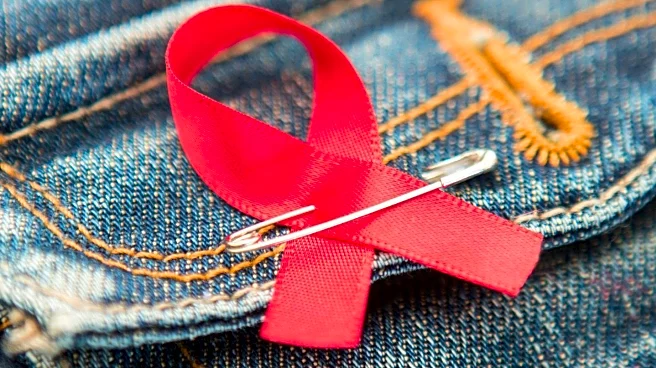What's Happening?
Breast cancer survival rates have seen significant improvements over the past four decades, largely due to advancements in early detection and treatment methods. According to data from the Centers for Disease Control and Prevention (CDC), between 2018 and 2022, two-thirds of female breast cancer cases were diagnosed at a localized stage, meaning the cancer was contained to the breast. This early detection has been facilitated by enhanced screening programs, such as mammography, which were introduced in the 1970s. The five-year relative survival rate for breast cancer patients has increased from 76.16% in 1975 to 93.2% in 2017, as reported by the National Cancer Institute's SEER Program. Dr. Julia McGuinness from Columbia University Irving Medical Center highlights that these improvements are due to earlier cancer detection and the availability of advanced treatments like surgery, chemotherapy, and radiation.
Why It's Important?
The improvement in breast cancer survival rates is a significant development in public health, reflecting the success of early detection and treatment strategies. This trend indicates that more women are living longer after a breast cancer diagnosis, which can reduce the overall mortality rate associated with the disease. The advancements in treatment options, including targeted therapies and immunotherapy, have also contributed to extending the lives of patients with metastatic breast cancer. These improvements not only enhance patient outcomes but also reduce the emotional and financial burden on families and healthcare systems. The ongoing research and development in breast cancer treatment continue to offer hope for even better survival rates in the future.
What's Next?
Continued advancements in breast cancer research and treatment are expected to further improve survival rates and patient outcomes. The focus remains on enhancing early detection methods and developing more effective therapies. As more women engage in regular screening, the likelihood of catching cancer at an early, more treatable stage increases. Researchers and healthcare providers are optimistic about the potential for new treatments to emerge, which could further reduce recurrence rates and improve quality of life for breast cancer patients. Ongoing education and awareness campaigns will also play a crucial role in encouraging women to participate in regular screenings.
Beyond the Headlines
The progress in breast cancer treatment highlights broader implications for healthcare equity and access. While survival rates have improved, disparities still exist, particularly among underserved communities who may have limited access to screening and advanced treatments. Addressing these disparities is crucial to ensuring that all women benefit equally from medical advancements. Additionally, the success in breast cancer treatment serves as a model for tackling other types of cancer, emphasizing the importance of early detection and personalized treatment approaches.










